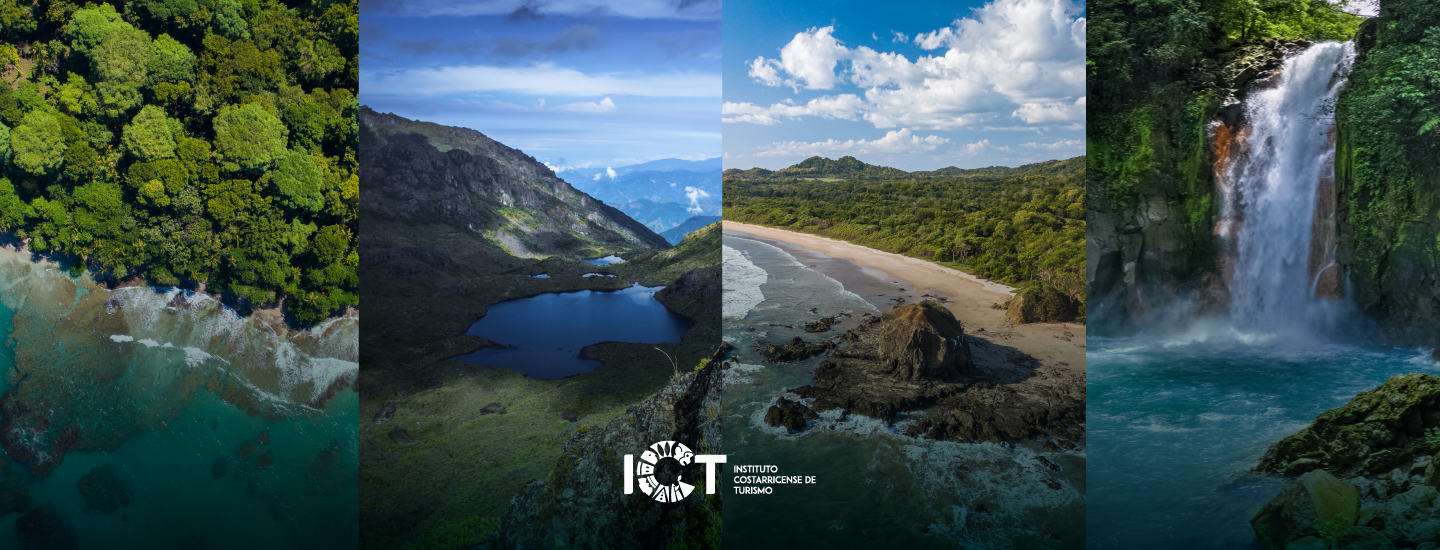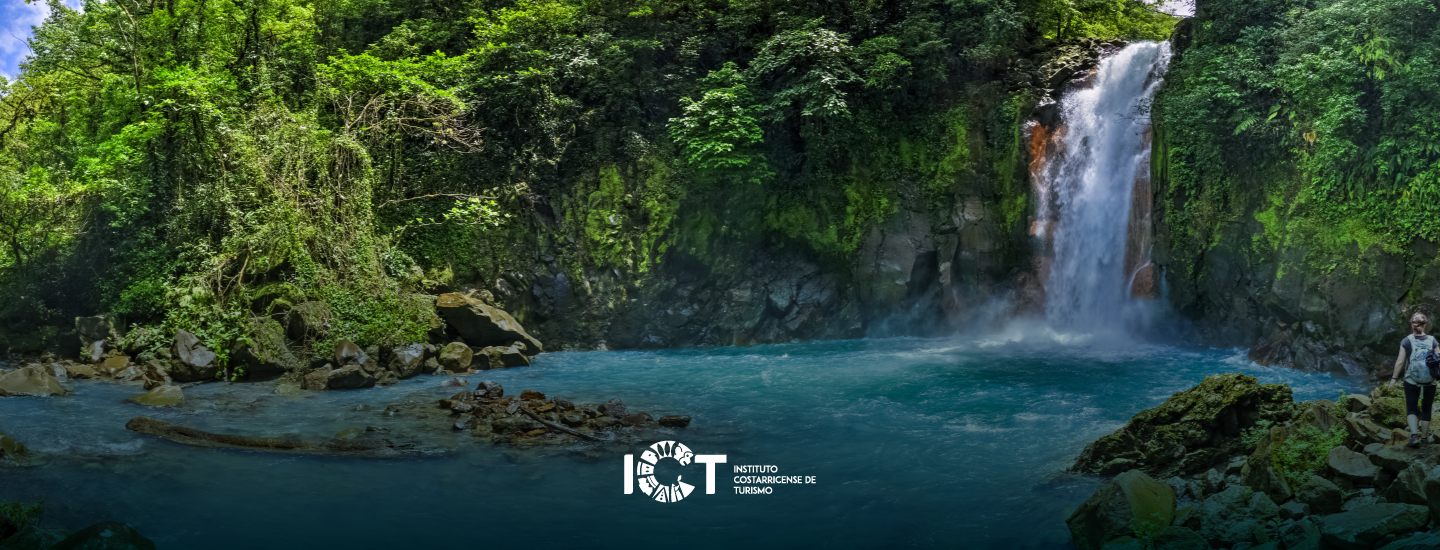Google Special Collections come to Costa Rica
- A worldwide audience can enjoy Costa Rica beauty with 360° images of a total of 76 tourist and cultural locations across the country becoming available today on Google Maps.
- Academic centers and airports are included in the areas recorded, which will be highlighted in the collection.
The 580 kilometers that separate San José from the Isla del Coco will no longer be an obstacle to experiencing and enjoying the flora and fauna, both on land and in the sea, of that luxuriant island. Thanks to technology, anyone with a computer or cellphone with an internet connection and Google Maps will be able to access the marvels of Costa Rica, no matter where they are in the world.
Today, Google announced the arrival of their Special Collections to Costa Rica, thanks to the support of the Essential Costa Rica country mark, as well as various organizations, including the Costa Rican Coalition of Development Initiatives (CINDE), the National System of Conservation Areas (SINAC), the Agency for Data Protection of Inhabitants (PRODHAB), the Costa Rican Tourism Board (ICT), the University of Costa Rica and the Municipality of San José, among others. 360° images were taken in cities, inside theaters, airports, markets, museums and many other attractions.
“Bicentennial Costa Rica needs a stimulus in the digital economy that encompasses every industry. In this case, the tourism sector has been essential. This effort, which has been shared between the government and private sector, has demonstrated the effectiveness of using artificial intelligence, augmented reality and other emerging technologies to push us to become a better country” said the Minister of Science, Technology and Telecommunications, Luis Adrián Salazar.
Over seven months, the Google team worked to photograph the center of the Costa Rican capital, San José, and the rest of the country’s provinces. The Isla del Coco and its beauty stand out among the locations recorded by Google professionals. Costa Rica is among the first countries in the Central America and Caribbean in which the Special Collections functionality has become available. It follows Bermuda, Puerto Rico, part of the Virgin Islands and Guatemala. Google has a world map encompassing over 220 countries and territories.
The Minister of Tourism of Costa Rica and member of the Essential Costa Rica Country Mark Committee, Maria Amalia Revelo, noted that “by choosing Costa Rica, Google Special Collections is recognizing and enhancing the natural, historical and cultural value of a variety of national treasures. For the Costa Rican Tourism Board, this is a marvelous example of how to use technology for tourism promotion. The 360° images of the 76 different destinations that were photographed will allow users to embark on a journey to places where not even cars can reach, treasure troves that, until now, have been difficult to reach, like the Isla del Coco. They can also explore the panoramic views of the most well-known places that have become part of our daily life, like La Sabana and the museums of the capital. We celebrate the public-private partnership that made this project possible".
Giovanni Stella, General Manager for Colombia, Central America and the Caribbean for Google, explained, “Costa Rica has great tourist and cultural attractions, sites that must be developed and shared with the world. At Google, we always put the user first, which is why we have been working day after day to innovate and provide all of these improvements, reinforcing our objective of contributing to the region’s digital ecosystem and continue our commitment to the country. Google’s mission is to organize the world’s information and make it universally accessible and useful, which is work that we see reflected in today’s launch, with information you can see and access from anywhere inside or outside of Costa Rica.”
What Costa Rican sights can you see in the Special Collections?
You will be able to enjoy the natural beauty of Isla del Coco, Playa Hermosa, Playa Ocotal, Playa Panamá, Playas del Coco, and others. Also featured are cultural locations like the Ruins of Cartago, the Jade Museum, Galería Nacional, the Numismatic Museum, the Museum of Pre-Columbian Gold, the Museums of the Central Bank of Costa Rica, the Museo Nacional, and the Museum of Visual Arts. The Juan Santamaría International Airport also makes an appearance, as does the Church of San Isidro de Coronado, the Basílica de los Ángeles, the Estadio Nacional, the Parque de Diversiones, Ocean Ranch Park, Parque Fraijanes, the Llanos de Cortés Waterfall, and the Iglesia Católica de San Bartolomé Apóstol, the Bosque de la Hoja, Alajuela’s Parque Recreativo Los Manantiales, and many more.
Useful and user-friendly
Using Special Collections is easy. When accessing maps.google.com, users can search for or identify the place they want to explore, and the link to Maps or the 360° panoramic view will appear directly. Also, in Google Maps, users can drag the small orange figure known as Pegman from the left side of the screen and drag it to the desired location, until a blue line appears to tour the site. Street View has become one of the most popular applications of Google Maps for its day-to-day usefulness. Not only does it allow users to go on virtual tours and verify the addresses of public places, but it also allows everyone, no matter where they are, to see places as if they were really there themselves.
Cutting-edge technology: How were the images recorded in Costa Rica?
This process was carried out with the Trekker and Tripod, two technologies that allow photos to be taken in places not accessible by car, for which reason it belongs to the Special Collections. A total of 60 sites in Costa Rica were collected using the Trekker. This tool is specially adapted to the outdoors and works with a camera in a backpack hanging from a person’s back that captures images as they walk. For example, the beauty of the beaches of Playa Hermosa, Playa Ocotal, Playa Panamá and Playas del Coco, among others, were showcased in this manner, as were the Llanos de Cortés waterfalls, the exterior of the Castillo Azul, the Museo Nacional and others.
The Tripod, on the other hand, is a system designed for indoor use. A total of 16 spaces were photographed, including the Basílica de los Ángeles, the Museo de los Niños, the Juan Santamaría International Airport and the Museum of Pre-Columbian Gold, among others.
Privacy
Google has developed a technology that allows faces and license plates to be obscured, so as to protect privacy. Additionally, it offers easily accessible tools for users to report images they consider to be inappropriate or sensitive, which will be reviewed and then taken down.

